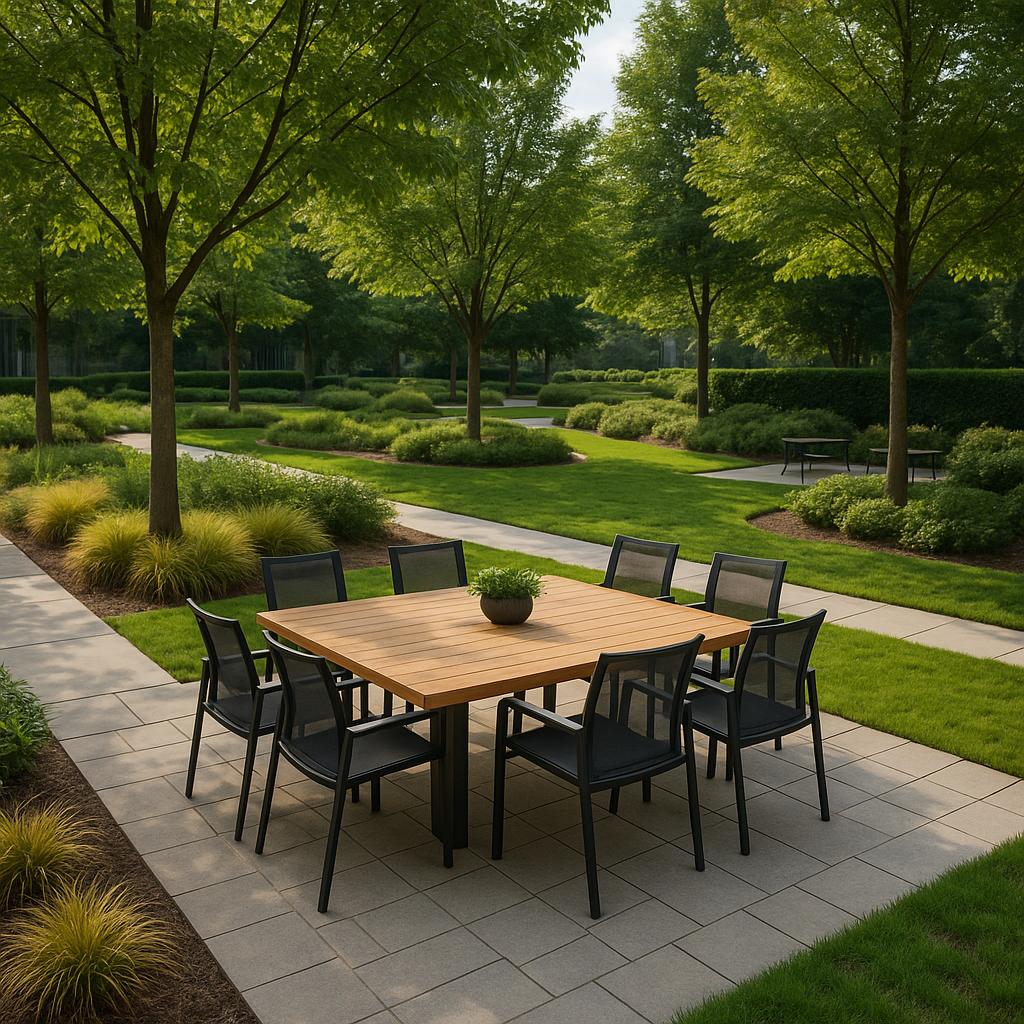In the modern corporate world, office landscapes are no longer just about appearance—they are strategic tools for productivity, wellness, and collaboration. One of the most impactful trends in landscape design today is the integration of outdoor meeting zones within a beautiful landscape. These thoughtfully curated areas encourage creativity, reduce stress, and foster team interaction in ways that indoor conference rooms often can’t.
This guide explores how to create outdoor zones that support effective meetings while enhancing your office campus. We’ll walk through expert techniques and sustainable practices for developing functional, inspiring, and low-maintenance outdoor meeting environments.
Why Outdoor Meeting Spaces Are Gaining Popularity
Boosts Creativity and Collaboration
Natural settings have been proven to stimulate innovative thinking. Outdoor meeting spaces framed by greenery, sunlight, and fresh air can break down formal communication barriers and promote idea-sharing.
Enhances Employee Wellness
Access to well-designed outdoor spaces supports mental clarity and emotional well-being. Offering outdoor zones for meetings and breaks allows employees to refresh and recharge.
Reinforces Corporate Values
A beautiful landscape with meeting areas signals an organization’s commitment to employee wellness, sustainability, and modern work culture.
Elements of Successful Outdoor Meeting Zones
Comfortable Seating and Tables
Ergonomic benches, modular outdoor tables, and weatherproof furniture are essential. Designs should be movable or flexible to accommodate small teams or larger groups.
Weather-Responsive Features
Install retractable awnings, pergolas, or umbrellas to shield users from sun and rain. These additions extend usability year-round.
Integrated Power and Connectivity
USB charging ports, Wi-Fi boosters, and outdoor outlets turn any landscape into a productive workplace.
Using Landscape Design Architecture to Define Outdoor Work Zones
Functional Landscape Drawing
Every meeting zone should start with a detailed landscape drawing. This document maps out key areas such as shaded seating, lighting access, footpaths, plant beds, and focal points.
Hardscape Framing
Use pavers, stone borders, and low hedges to visually and physically define meeting areas. These materials create structured zones while maintaining an organic flow with the environment.
Acoustic Considerations
Landscaping can reduce noise and enhance privacy. Trees, shrubs, water features, and sound-absorbing walls help maintain a quiet, focused environment.
Sustainable Features for Meeting Zones
Native and Low-Maintenance Plantings
Incorporate drought-tolerant plants that require minimal watering and care. Not only do they support beautiful landscape sustainability, but they also keep maintenance costs low. Learn more in Beautiful Landscape Tips for Low-Maintenance Office Grounds.
Energy-Efficient Lighting
Low-voltage LEDs or solar-powered lights illuminate the space while keeping operations eco-friendly. Explore ideas in Beautiful Landscape Lighting Ideas for Corporate Campuses.
Rain Gardens and Shade Trees
Rain gardens help manage stormwater naturally while adding beauty. Strategically planted trees offer shade and comfort while enhancing biodiversity.
Zones by Type: Examples of Effective Outdoor Meeting Spaces
Casual Lounge Zones
- Features: Adirondack chairs, low tables, soft lighting
- Purpose: Informal brainstorming, breaks, small chats
Collaborative Table Zones
- Features: Long tables, whiteboards, presentation screens
- Purpose: Strategy sessions, workshops, client presentations
Private Garden Pods
- Features: Enclosed by hedges or trellises, single table with 4-6 chairs
- Purpose: One-on-one discussions, confidential talks
Mixed-Use Terraces
- Features: Modular seating, open air with partial shade
- Purpose: Employee lunches, hybrid meetings, team check-ins
The Role of Landscape Contractors in Outdoor Office Design
Expert Implementation
An experienced landscape contractor ensures design meets all functional, aesthetic, and code requirements. They integrate irrigation, drainage, electrical infrastructure, and seating layouts seamlessly.
Long-Term Maintenance Planning
Outdoor meeting spaces require seasonal upkeep. Contractors help plan pruning, furniture storage, pest control, and equipment checks.
Smart Material Choices
Contractors advise on choosing durable, non-slip, UV-resistant surfaces and furnishings suited for frequent use.
Landscape Applications That Elevate Outdoor Workspaces
- Use vertical green walls to save space and introduce visual interest
- Install bioswales to support drainage while adding beauty
- Create “green corridors” that connect different zones
See more sustainable strategies in Beautiful Landscape Plans for Eco-Friendly Office Spaces.
Final Thoughts
Outdoor meeting zones offer a compelling mix of form and function. When integrated into a beautiful landscape, they not only provide inspiring environments for collaboration but also support broader wellness and sustainability goals.
By investing in smart landscape design, professional landscape contractors, and detailed planning through landscape drawings, companies can turn unused outdoor areas into valuable, productive, and beautiful spaces. The result is a corporate campus that enhances performance, promotes health, and stands as a model for progressive workplace design.

